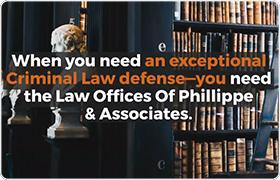Olmito Felony Lawyer, Texas
Sponsored Law Firm
-
 x
x

Click For More Info:
-
The Law Office Christopher Phillippe
104 North Express Way Brownsville, TX 78521» view mapCriminal Defense Law Helping Those Facing Difficult Times
We are confident in our ability to resolve difficult legal issues, and we will use our years of experience to represent your best interests.
800-659-6781
Not enough matches for Olmito Felony lawyer.
Below are all Olmito Criminal lawyers.
Daniel Pizana
Immigration, Family Law, Divorce & Family Law, Criminal
Status: In Good Standing Licensed: 11 Years
Michael Rodriguez
Complex Litigation, White Collar Crime, Civil Rights, Products Liability
Status: In Good Standing
Veronica Farias
International Other, Family Law, Criminal, Personal Injury
Status: In Good Standing Licensed: 33 Years
Juan Jose Martinez
Personal Injury, Family Law, Commercial Real Estate, Criminal
Status: In Good Standing Licensed: 40 Years
 Christopher Phillippe Brownsville, TX
Christopher Phillippe Brownsville, TX Practice AreasExpertise
Practice AreasExpertise
